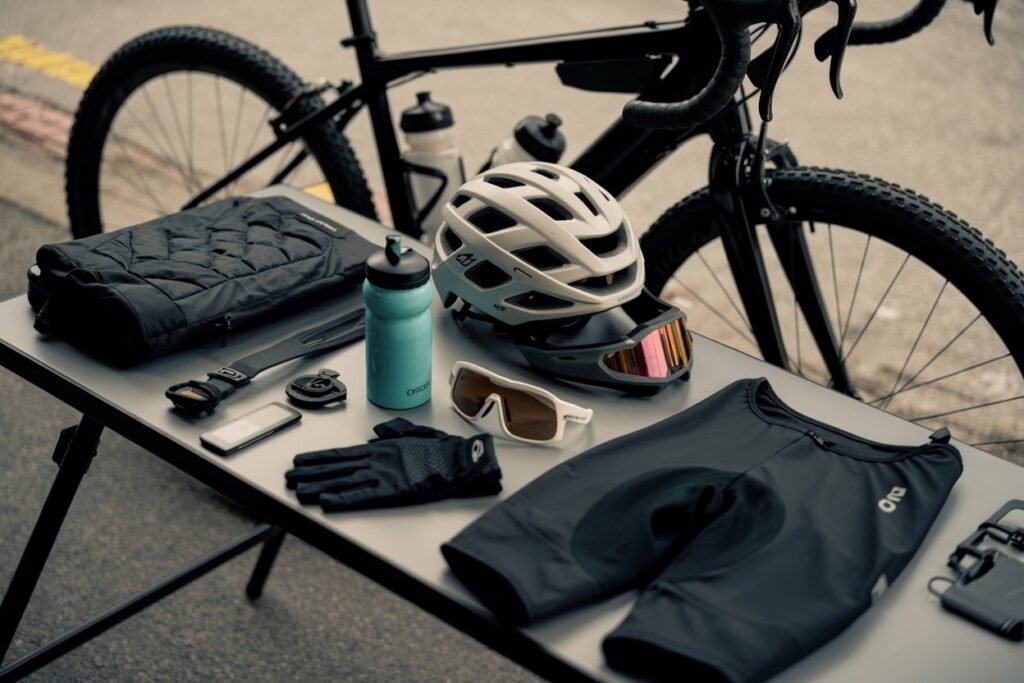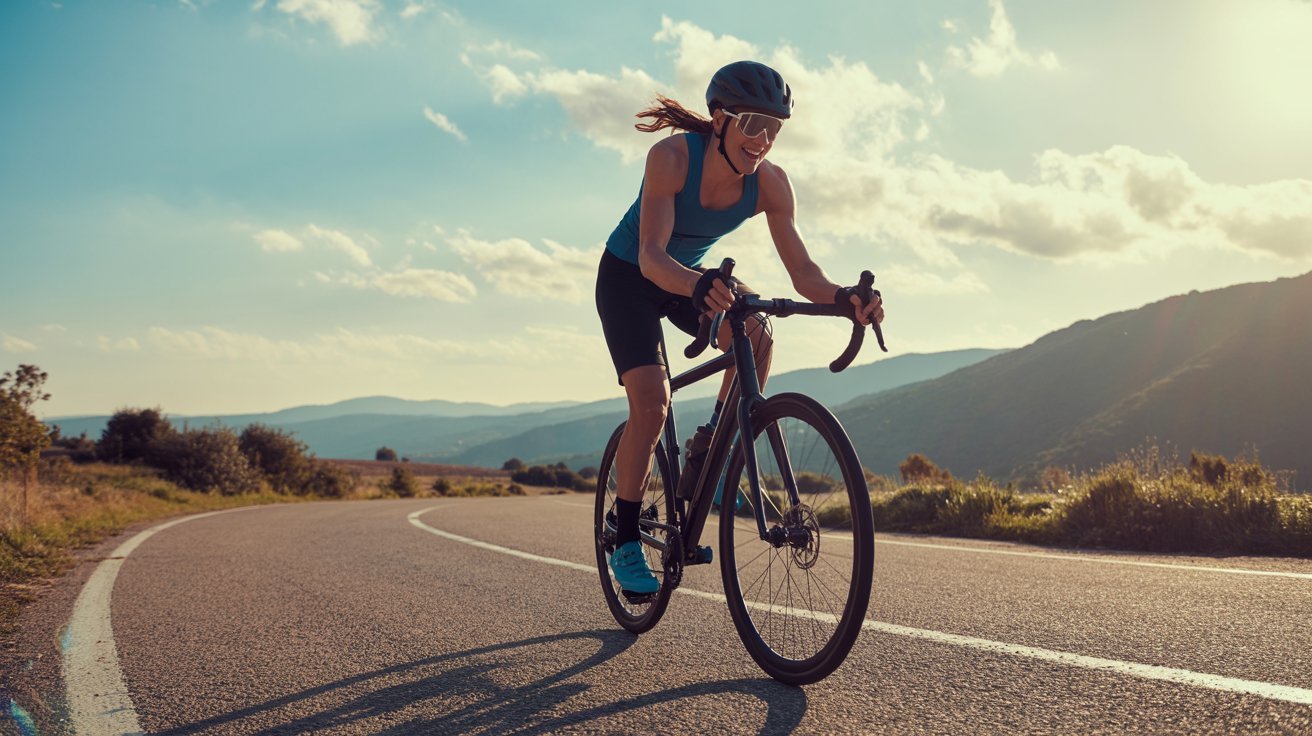Cycling is a great way to lose weight. Riding 70 miles a week can help you shed pounds.
Cycling is not just fun; it is an effective workout. When you cycle 70 miles a week, you burn calories, strengthen muscles, and boost metabolism. This combination aids weight loss. Plus, cycling is a low-impact exercise, making it easier on your joints.
You can enjoy the outdoors and improve your health at the same time. This blog will explore how cycling 70 miles a week can help you reach your weight loss goals. We will look at the benefits, tips, and what to expect on your journey. Get ready to pedal your way to a healthier you!
Benefits Of Cycling For Weight Loss
Cycling helps burn a lot of calories. This makes it great for weight loss. A person can burn around 400 calories in an hour. The more you cycle, the more calories you burn. It also depends on how fast you pedal. Faster cycling means more calorie burn. It’s fun and can be done indoors or outdoors. Regular cycling keeps the body active. This helps in shedding extra weight. It is a simple way to stay fit and healthy.
Cycling regularly boosts your metabolic rate. A higher rate means your body burns more energy. This helps in losing weight faster. Cycling builds muscles too. More muscles mean a better metabolism. It keeps your body working even after you stop cycling. This makes it a great exercise for long-term benefits. Enjoy the ride and keep your metabolism high!
Why 70 Miles A Week?
Cycling 70 miles each week helps in losing weight. It burns a lot of calories. Regular cycling boosts your metabolism. This means you burn more calories even when resting. Riding this distance is good for your heart. It also strengthens your muscles. A healthy body loses fat faster.
Cycling with the right intensity is important. Ride at a pace you can maintain. Don’t go too fast or too slow. Mix short fast rides with long slow ones. This helps burn fat and build endurance. Always listen to your body. Rest when you feel tired. Overdoing it can lead to injuries.
Planning Your Weekly Cycling Routine
Start by setting small, achievable goals. It helps stay motivated. Aim for a few miles each day. Gradually increase your distance. This builds confidence and endurance. Listen to your body. Rest when needed. Avoid setting goals that feel too big. Focus on steady progress. Celebrate each milestone. Enjoy the journey.
Keep a simple journal of your rides. Note the distance and time. Track how you feel during each ride. This helps see your improvement. Use a basic app if you like. It shows your progress clearly. Seeing changes is exciting. It keeps you motivated. Review your notes weekly. Adjust your goals as needed.
Nutrition Tips For Cyclists
Eating right before a ride is very important. Carbs give energy to muscles. Choose foods like bananas, oats, or whole-grain bread. These are good for you. Drink water to stay hydrated. Water helps your body work well. Avoid heavy meals. Heavy meals can make you slow. A small snack is best. Snacks like nuts or fruit are good choices. They digest quickly and help you ride strong.
After riding, muscles need to heal. Protein helps repair muscles. Eat foods like chicken, fish, or beans. These foods are rich in protein. Carbs are also needed. They refill energy lost during the ride. Choose brown rice or sweet potatoes. They are healthy and filling. Don’t forget to drink water. It helps replace fluids lost in sweat. Eating right helps you feel better and ride better.
Incorporating Strength Training
Cycling helps burn fat. But strength training helps build muscle. More muscle means burning more calories. Even when resting. Strong muscles also protect joints. This helps in cycling longer. You will feel less tired. Enjoy the ride!
Add exercises like squats and lunges. These help in building lower body strength. Push-ups and planks strengthen the upper body. A strong core helps balance. Yoga can improve flexibility and recovery. Stretching keeps muscles flexible. Try different exercises for better results.

Staying Motivated And Consistent
Being part of a cycling community helps a lot. You’ll find support and new friends. Sharing rides makes them more fun. People cheer you on when you reach goals. You learn tips and tricks from others. Group rides push you to do more. It’s easier to stay motivated together. You won’t skip rides because friends are waiting. Happiness grows with shared experiences. Everyone has fun and stays healthy.
Personal challenges keep you focused. Set small goals each week. Ride a little longer or faster. Make goals that are hard but possible. Achieving them feels great. Challenges help you see progress. They make rides exciting. You push yourself to do better. Track your rides and goals. Celebrate when you succeed. Little wins add up. Feeling accomplished boosts your mood. Keeps you consistent and motivated.
Essential Gear For Long-distance Cycling
Picking the best bike matters. Comfort and fit are key. A lightweight bike helps with speed. Road bikes are great for distance. Mountain bikes suit rough paths. Hybrid bikes fit both city and trail. Test ride before buying. Adjust the seat and handlebars. Look for a strong frame. Choose smooth tires for easy rolling.
Accessories make cycling safe and fun. Helmets protect your head. Water bottles keep you hydrated. Gloves give grip. Padded shorts help comfort. Lights are good for night rides. Repair kits fix flat tires. Sunglasses shield eyes from sun. Bike locks keep your bike safe. GPS devices track your route. Reflective clothing boosts visibility.

Avoiding Common Cycling Injuries
Cycling 70 miles weekly aids weight loss and boosts fitness. Prevent common injuries by maintaining a proper posture. Regular bike checks and using suitable gear enhance safety and comfort.
Proper Warm-up Techniques
Before cycling, warm-up is key. Start with slow pedaling. This helps muscles relax. Stretch your legs and arms gently. Keep your body loose. Warm muscles work better. Cold muscles can hurt easily. A good warm-up lasts 10 minutes. It prepares your body for cycling. You’ll feel ready to ride.
Recognizing Signs Of Overtraining
Overtraining can make you tired. It can hurt your muscles. Watch for signs like sore muscles or feeling weak. Rest is important to heal. Too much cycling can cause pain. Listen to your body. Take breaks if needed. Balance exercise with rest. This keeps you strong and healthy.
Frequently Asked Questions
How Many Miles Should I Bike A Week To Lose Weight?
Aim for 30 to 60 minutes of biking, five times a week. This equals about 50-100 miles weekly. Consistency and intensity matter. Adjust based on your fitness level and weight loss goals. Combine with a balanced diet for optimal results.
Always consult a fitness expert for personalized advice.
Can You Lose Belly Weight By Cycling?
Cycling helps burn calories and can reduce belly fat. Consistent cycling increases metabolism and muscle tone. Combine cycling with a balanced diet for best results. Regular cycling sessions of moderate intensity are effective. It’s an enjoyable and low-impact exercise that promotes overall weight loss and improves fitness.
How To Lose 2 Pounds A Week By Cycling?
Cycle for at least 300 minutes weekly at moderate intensity. Maintain a calorie deficit by eating nutritious, balanced meals. Stay hydrated and ensure adequate rest for recovery. Track your progress with a fitness app to stay motivated. Always consult a doctor before starting any new exercise regimen.
What Is The 75 Rule In Cycling?
The 75 rule in cycling suggests riding 75% of your weekly miles at a comfortable, conversational pace. This promotes endurance and reduces injury risk.
Conclusion
Cycling 70 miles a week can boost weight loss efforts. It’s an effective way to burn calories. Consistency is key. Stick to your routine for the best results. Remember to enjoy the journey. Celebrate small milestones along the way. Keep pushing yourself, and you will see progress.
Cycling not only helps with weight loss but also improves overall health. Stay motivated and keep pedaling. Your goals are within reach. Happy cycling!








